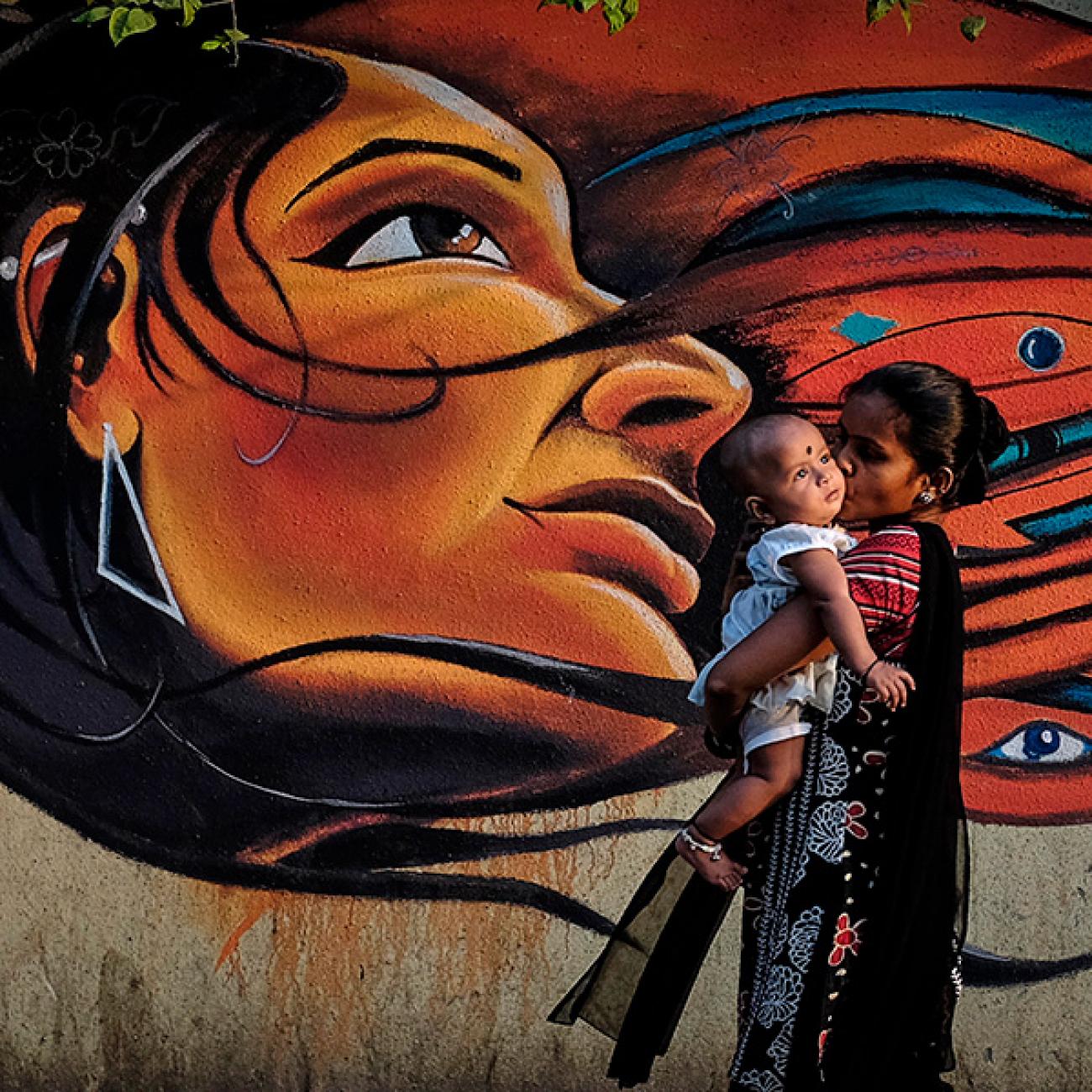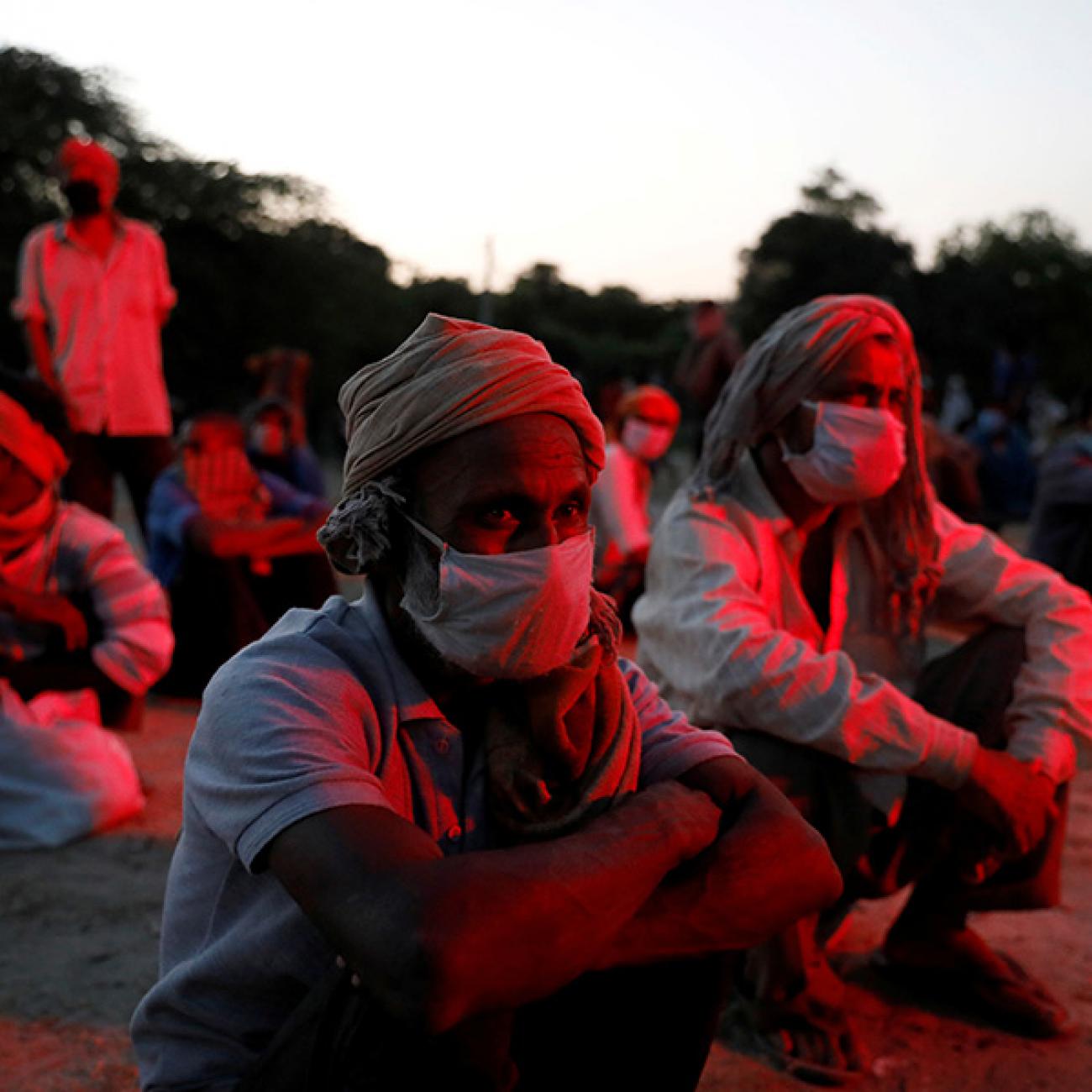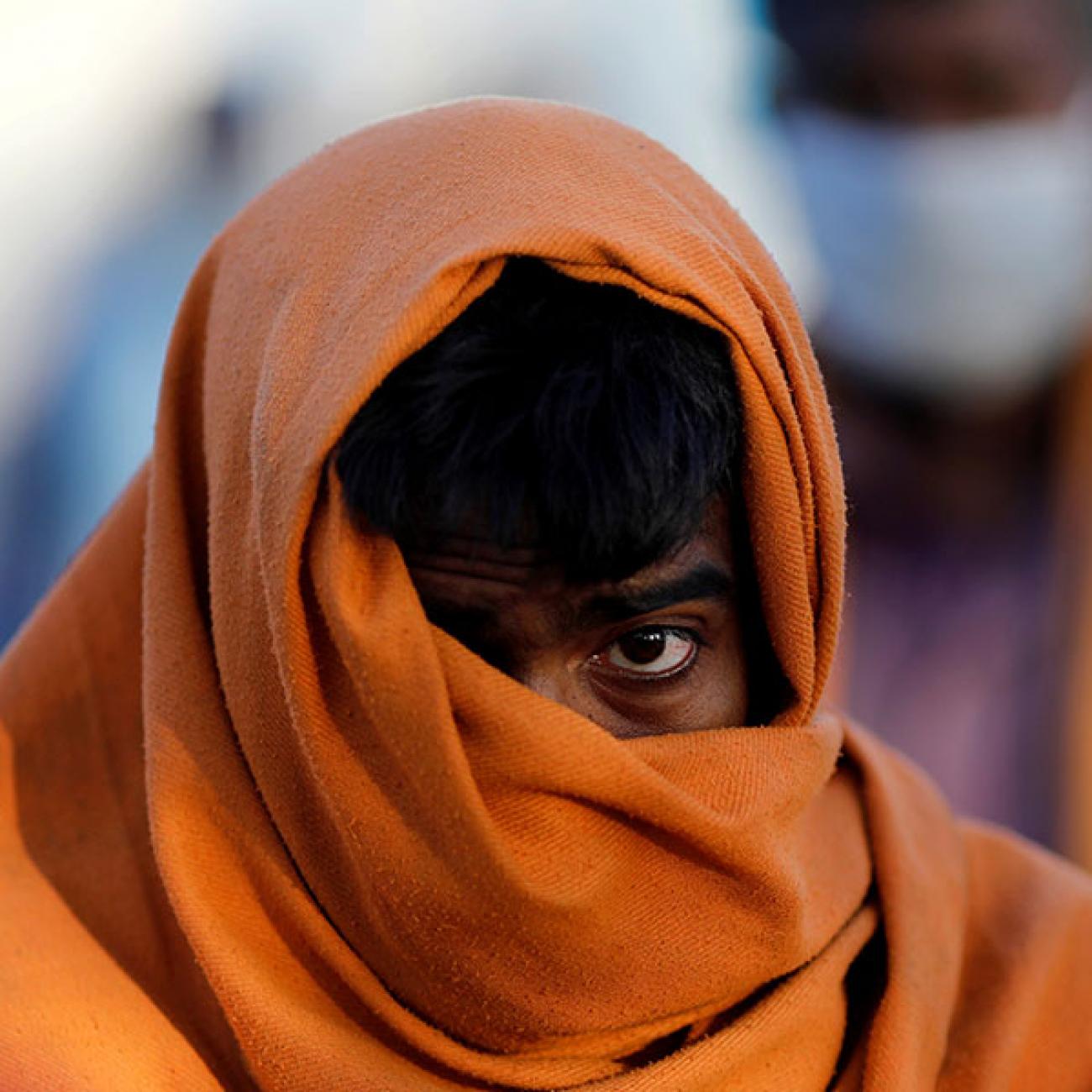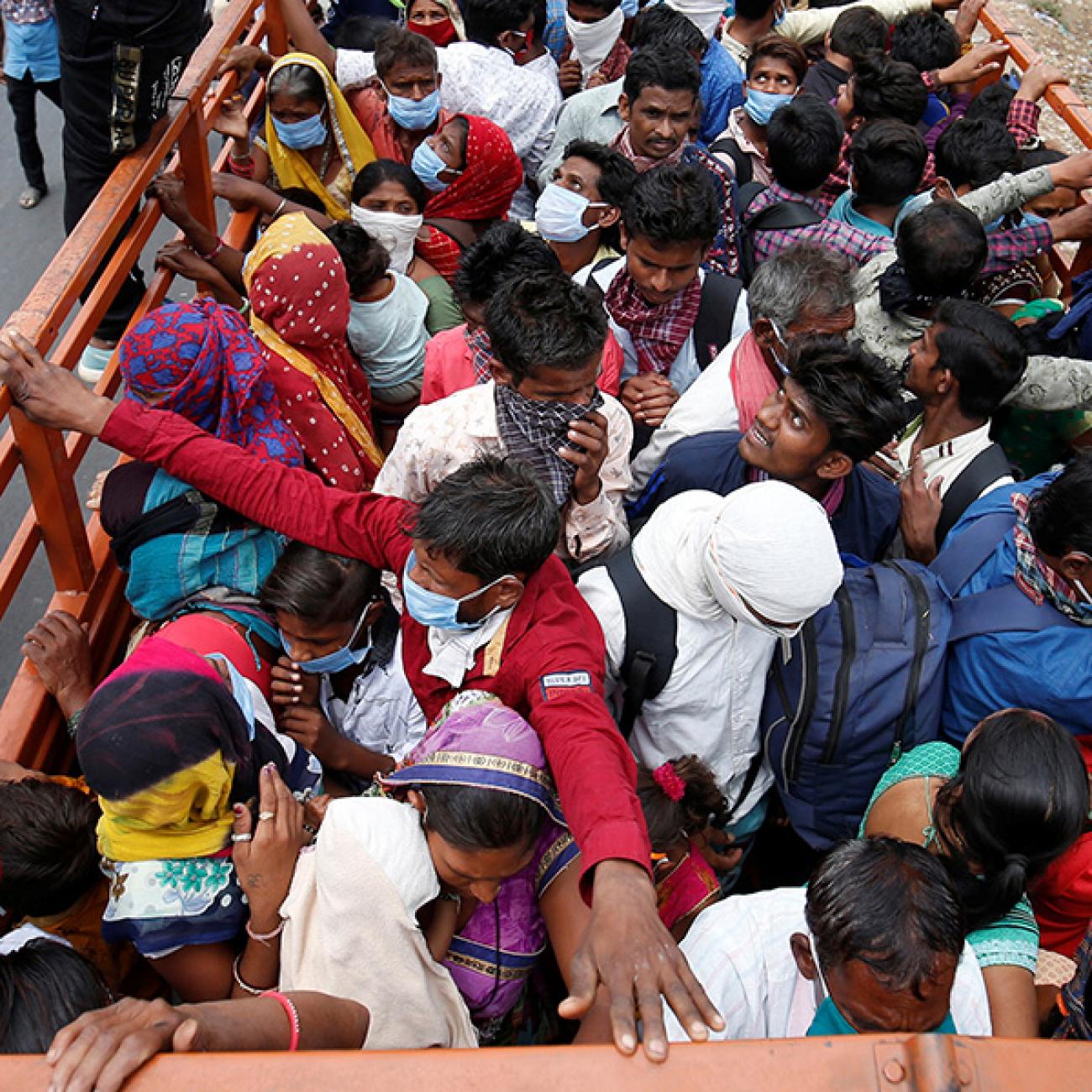That writer of sparkling lines for celebrated heroes, heroines, villains, and other stars in Bollywood—Javed Akhtar—was certainly not thinking of India's new 2020 amendment to its Foreign Contribution Regulation Act (FCRA), when he wrote his famous poem titled Naya Hukmnama (The New Ordinance) in 2018, which was translated into English by Rakshanda Jalil, part of which is shown below.
Even the most well-meaning of voluntary organizations find themselves trapped
As the world of Non-Government Organizations (NGOs) in India absorbs the full implications of the new restrictions suddenly in place under the new law passed to control them, it is hard to shake off the feeling that lyricist Akhtar was at a prescient moment, referring to exactly the sort of situation they now find themselves in. Seen as guilty until proven innocent, they stand under a shadow of suspicion, stripped of their sense of connection to the India story as the new law is cast as a net into which even the most well-meaning of voluntary organizations find themselves trapped.
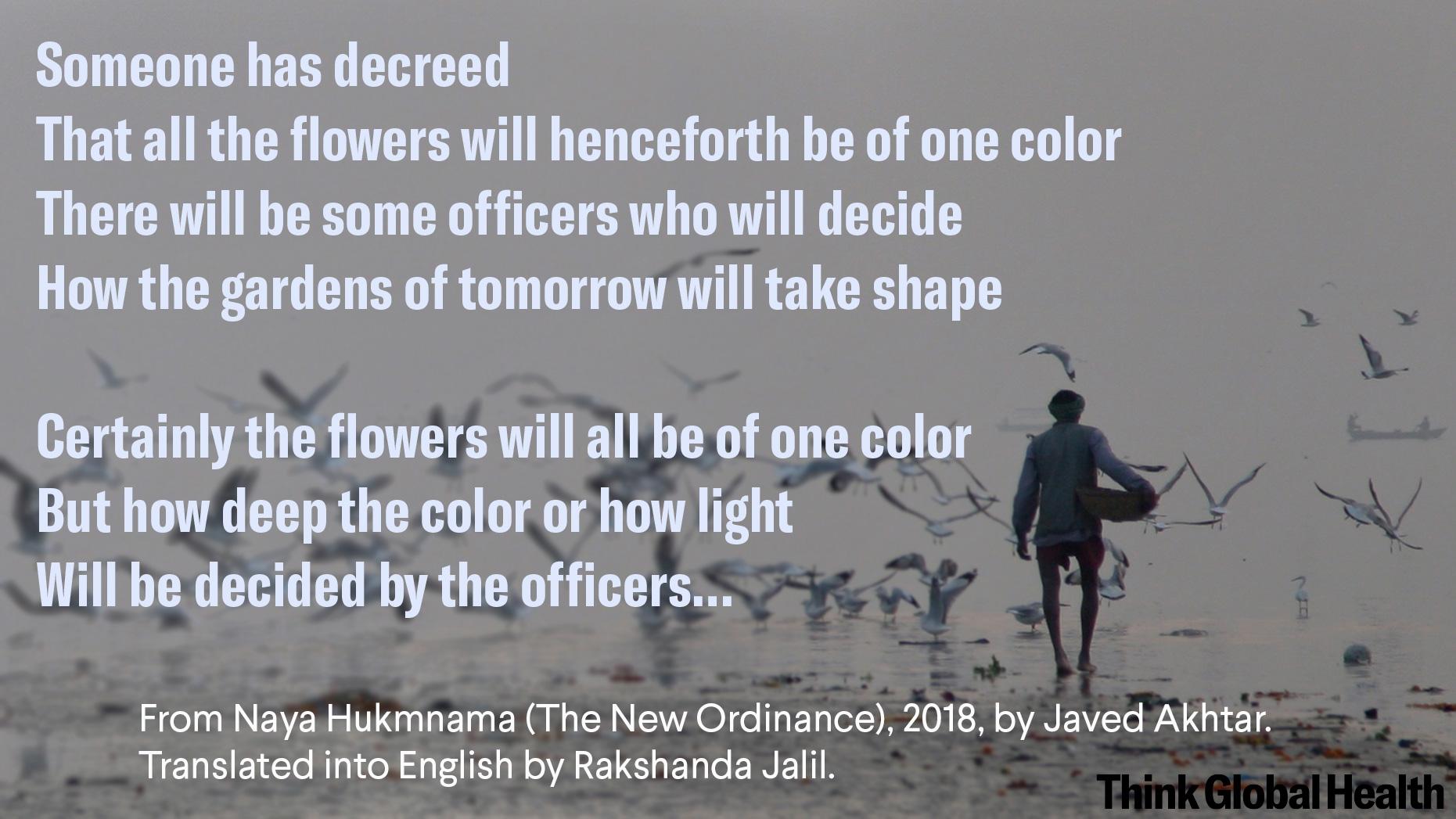
The government of India introduced the deeply concerning amendment to the bill in India's Parliament in September, proposing more than ten restrictive changes to the older version. The bill was presented without any discussions or stakeholder consultations, and it is now a law. It introduces new rules and restrictions for NGOs receiving foreign funds—so not only threatening their functioning and existence, but as a consequence, potentially slowing down the process of societal transformation that they work towards.
The large bureaucracy required now for compliance and paper work will break the back of the small NGO
According to the new rule, only one branch of the State Bank of India located in Delhi will be the authorized bank to receive foreign money, on behalf of all the NGOs in the country. According to a report by the Centre for Social Impact and Philanthropy at Ashoka University of the 21,490 NGOs that filed FCRA returns for 2018–19, only 1,488 were registered in Delhi, that's only 7 percent of NGOs. So the new rules will require functionaries of about 93 percent of affected NGOs spread across India—many in remote geographies who often find it hard to secure internet connectivity and data—to do complex operations online and remotely, like open a pass-through bank account in a government bank, which is the only bank branch now designated as authorized.
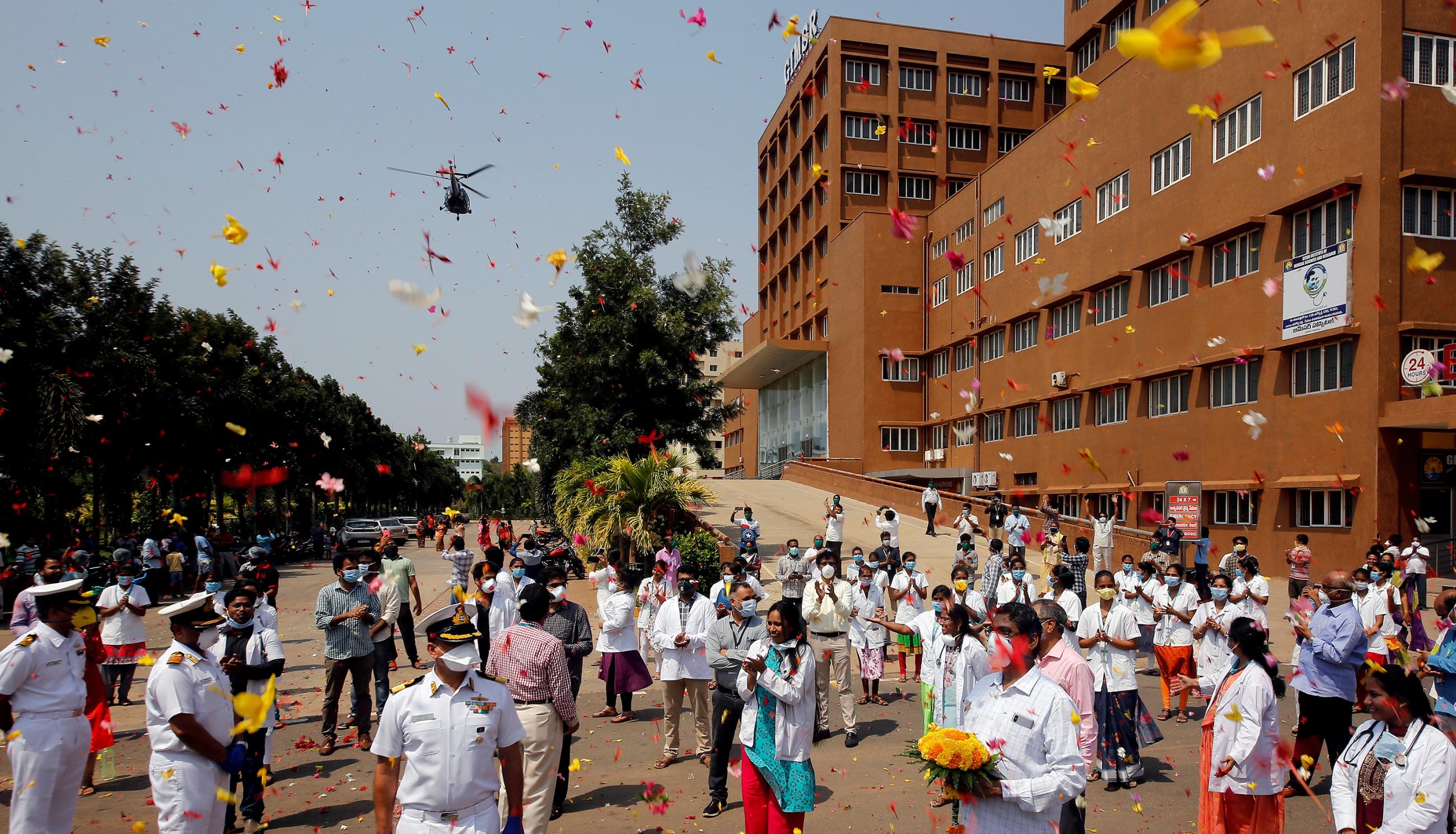
Banking in far-flung towns and villages is notoriously difficult as it is, and smaller NGOs, which are vital for reaching the most marginalized groups in the country, will be hobbled beyond repair by this new rule. The large bureaucracy required now for compliance and paper work will break the back of the small NGO working against all odds, often in dire and even hostile circumstances to help India reach its development goals.
A failure to be able to meet its development goals would in turn setback India's ambitious plans for economic recovery, good governance to benefit all citizens, and social change that is required desperately.
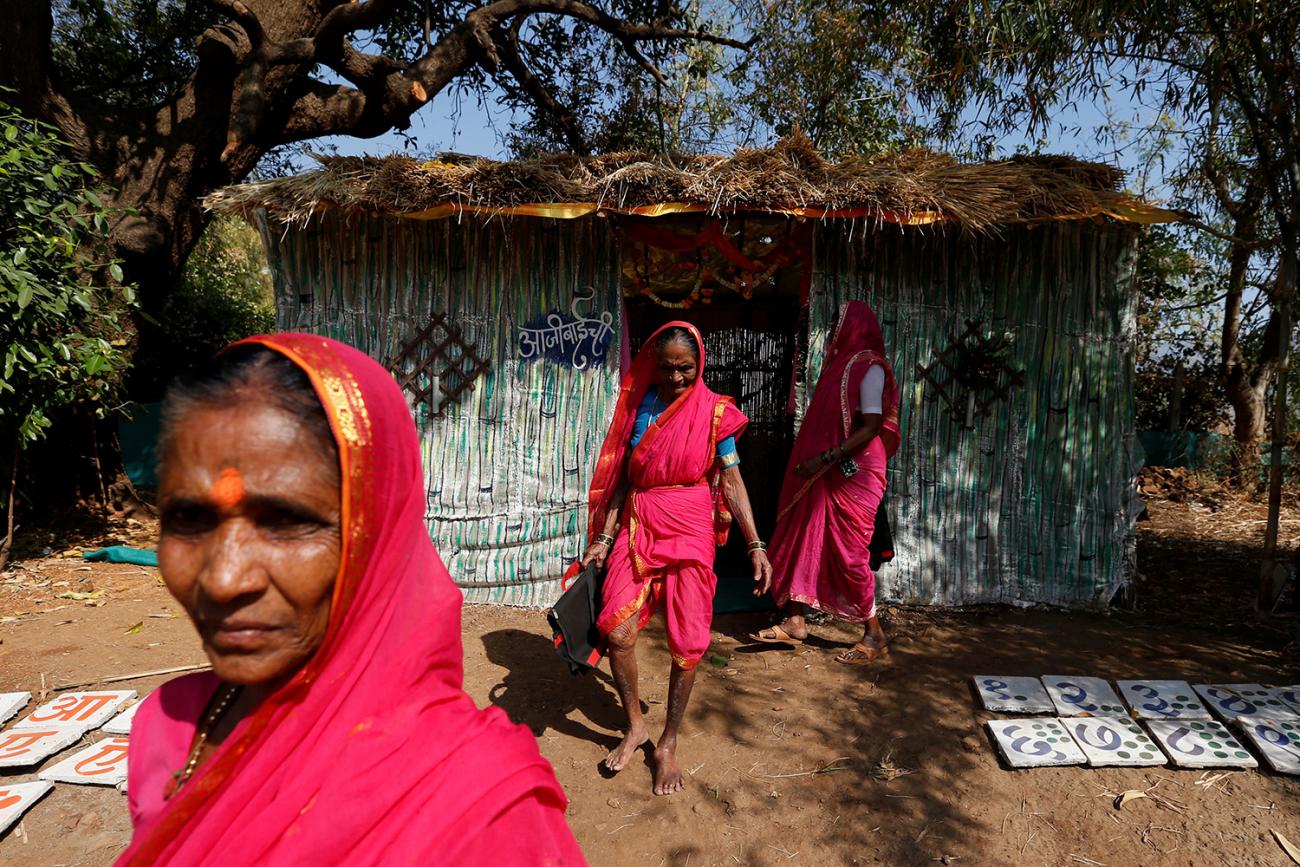
Another change is stopping the practice of an NGO governed under the new law from transferring foreign grants received by it to other NGOs. This would break the entire network through which meaningful collaborations in India take place—collaborations that are responsible for many pioneer research achievements and innovations in the country.
Breaking the entire network through which meaningful collaborations in India take place
These collaborations also allow NGOs to reach inaccessible areas and vulnerable populations through community-based organizations. In 2018–19, 4,107 NGOs registered in 380 districts—or about one in five NGOs governed under the new FCRA law—received such collaborative subcontracts. The total amount transferred was more than $25 million, and the median transfer value was $10,870. In other words, half the 4,107 NGOs received a subcontract of less than $10,870. The center is now seeking to shut this route, and this will have damning consequences. This would impact smaller NGOs who depend on subcontracts and work in communities in the most remote geographies, often going beyond the call of duty to help improve the lives of the people living there.

The new amendment strictly mandates just 20 percent of the funds coming in to be spent on administration, down from 50 percent, while at the same time increasing the demands of regulatory compliance. This will drastically hurt the ability of NGOs to oversee their grants.
It will also have a deleterious impact on NGOs to work together as partners in crucial areas of research, especially health and science. It would damage the advocacy that benefits Indians so much. And contrary to the characterization of funds being "misused," administrative expenses often support many of the most ardent and earnest volunteers who work for small amounts, often less than $250 a month.
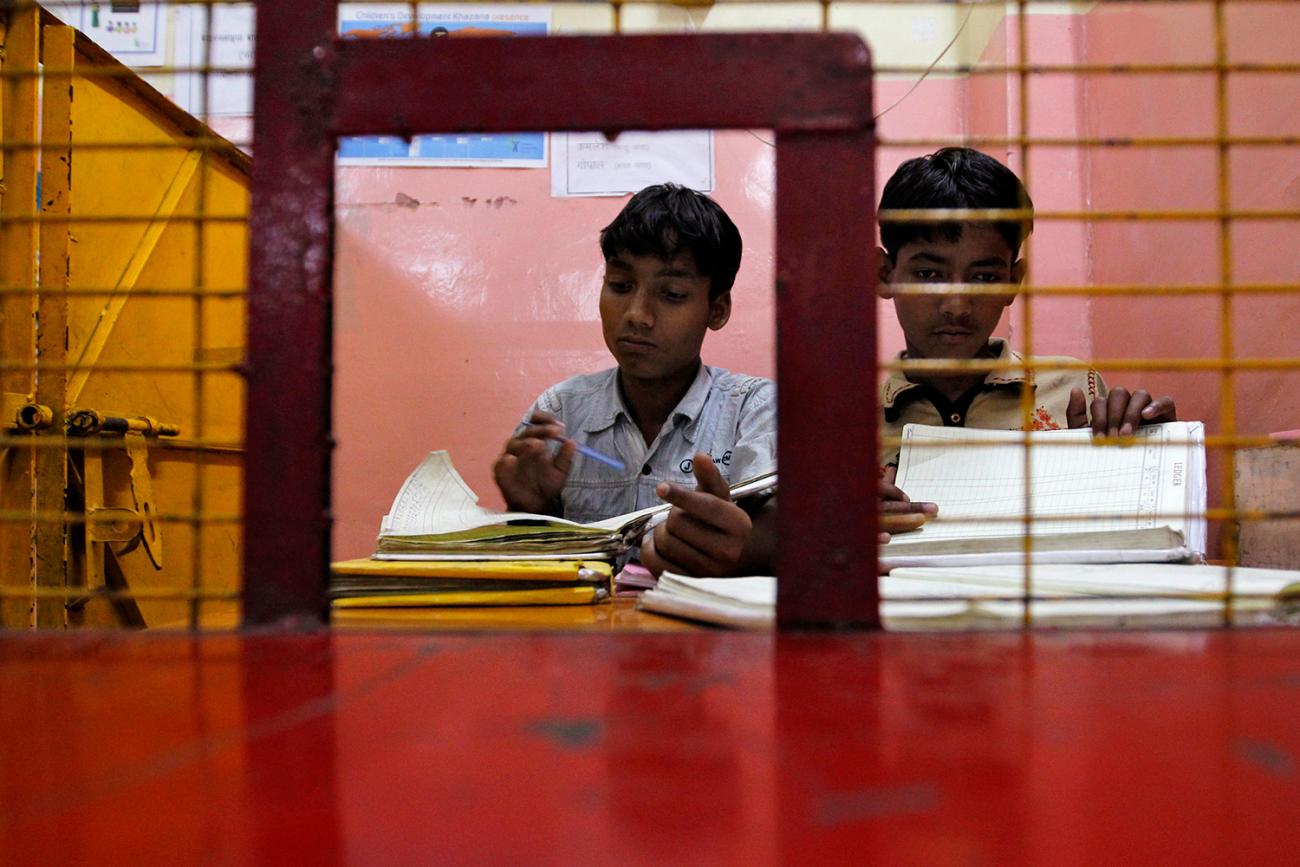
The Checkered History of the Law
Laws, regulations and oversight are three things that dedicated, hardworking NGOs have always been supportive of, as they provide a framework for them to function within. But the origins of the FCRA law are most unfortunate. As I have written about earlier, it was precisely because NGOs were successful in mobilizing community and creating awareness on their rights and entitlements that some governments in the past felt threatened by the more vocal citizenry this was shaping.
The original 1976 law was primarily meant to delegitimize protests by NGOs and intimidate those critical of government
During the political emergency declared by the then Prime Minister Indira Gandhi between 1975–77, NGOs were at the forefront of protests, defying the curtailment of freedom of speech and expression and criticizing governmental overreach and authoritarianism. Scholars have traced the origins of NGOs' adversarial relations with the state to this political phase, arguing that the original Foreign Contributions Regulation Act, introduced in 1976 ostensibly to check threats of the "foreign hand," was primarily meant to delegitimize protests by NGOs and intimidate those critical of government. While the emergency of the mid-70s is now many decades behind us, state–NGO relations continue to increasingly face threats from the state, and FCRA regulations have slowly become even more draconian and controlling of civil society actions. Bringing in regulations that tarred NGOs as guilty from the start, and now particularly, have led to demonization and discrediting of them as villains or groups anxious to only partake of resources. This has damaged not just self-esteem but diminished their ability to function fully up to their potential.
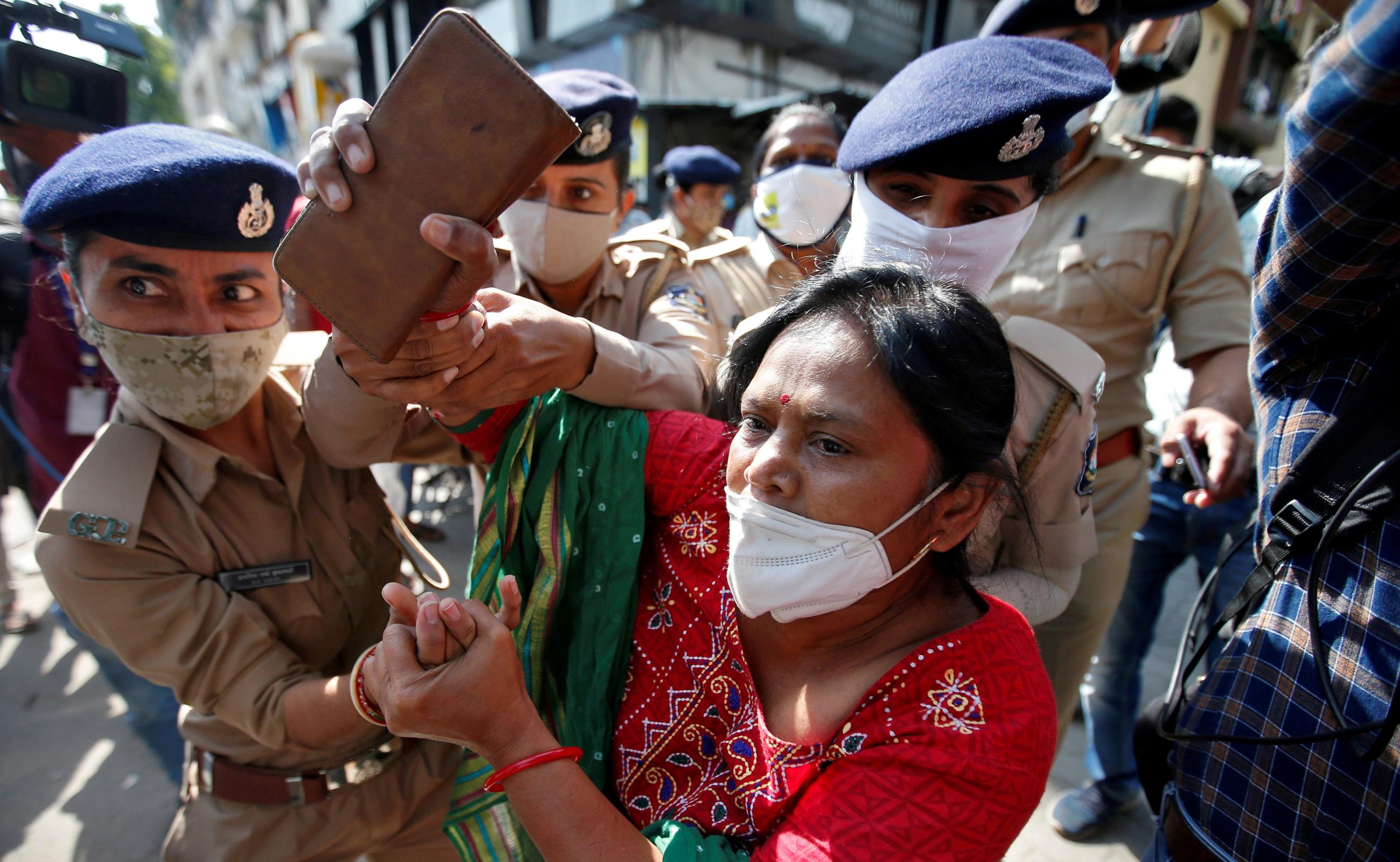
Spirit of Voluntarism is Undervalued
With the latest set of regulations, the very spirit of voluntarism and care has been hamstrung. The portrayal of NGOs as dishonest appropriators of funds, domestic and foreign, is completely at odds with the reality of thousands of individuals with fire in their belly, passionate about helping fellow citizens and being the change they want to see.
Thousands of individuals with fire in their belly, passionate about helping fellow citizens and being the change they want to see
The work of Abhay and Rani Bang, the Gandhians and founders of SEARCH (Society for Education, Action and Research in Community Health) in a remote rural part of western India have made healing wounds a mission. Their work on home-based neonatal care was scaled up and adopted nationally and globally in Nepal, Bangladesh and several countries in Africa. Another NGO Goonj, which collects, sorts, repurposes and distributes in excess of 5 million kilos of clothing and other urban under-utilized material each year to India's poor, acts all year long—and not just in a crisis. Its work is commendable as it reaches those most in need and also with sustainability in mind. The idea that foreign money is somehow being siphoned off by greedy individuals, which appears to be the premise for the new FCRA law, has grave implications, as it unfairly projects vital voluntary action as acts of villainy.
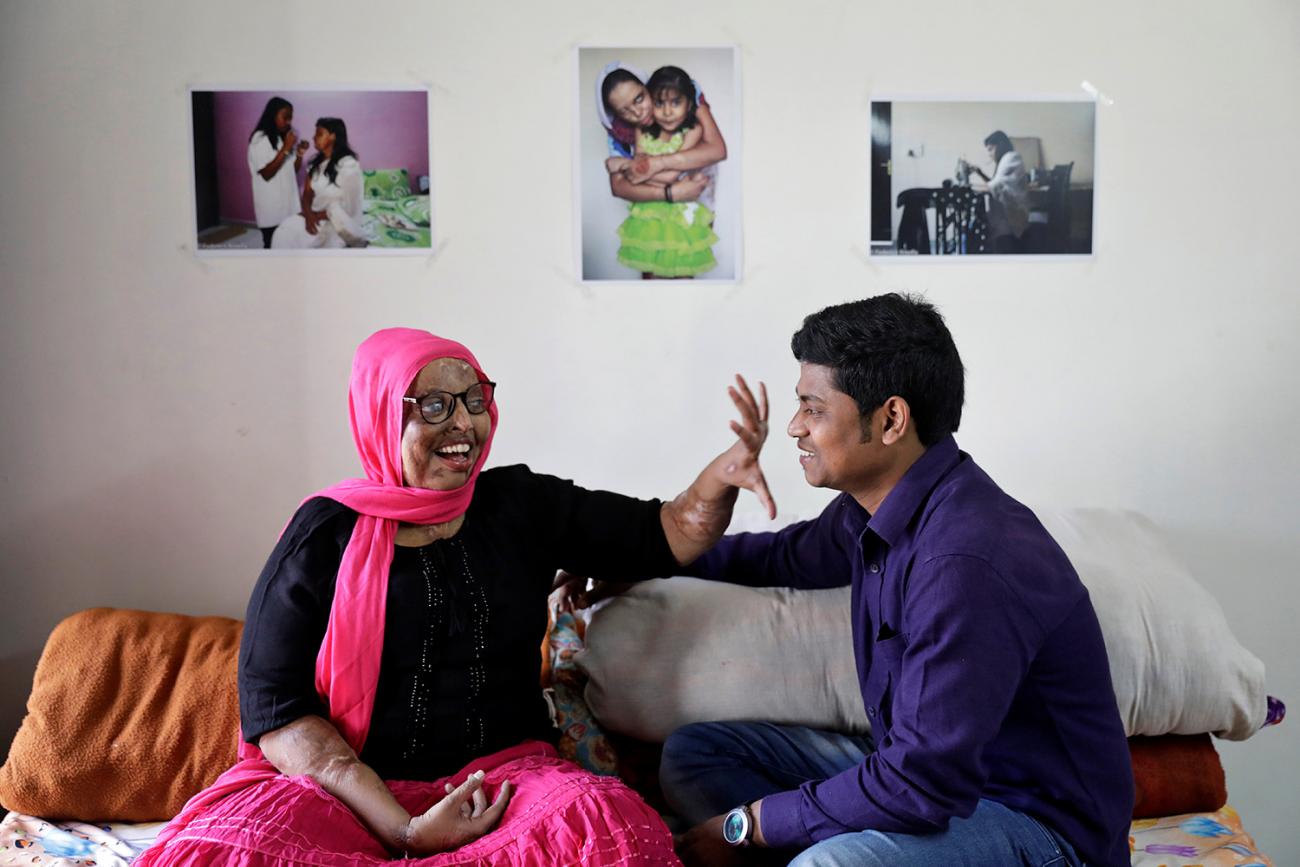
Government Needs to Understand What NGOs Do
First of all, the amount of funds coming in via foreign funding is woefully small. In 2018–19, of the total foreign money that came into India FDI (foreign direct investment) amounted to $42.9 billion, Funding governed by the new FCRA law accounted for only 6.6 percent or one-fifteenth of the total amount of money coming in.
Unfairly projecting vital voluntary action as acts of villainy
And as government told parliament, the foreign funding of NGOs has already been on a decline and has come down drastically from $2.75 billion in 2015–16 to only $0.97 billion in 2016–17. Between 2016–17 and 2018–19 the number of international donors contributing to FCRA-governed funds have dropped from approximately 110,000 to 88,000, by over one-third. The new rules will further discourage international donors from bringing in resources needed at a time of a grave economic crisis that India faces—uncertain times even as the COVID-19 pandemic rages on and fairly limited domestic philanthropy is available.
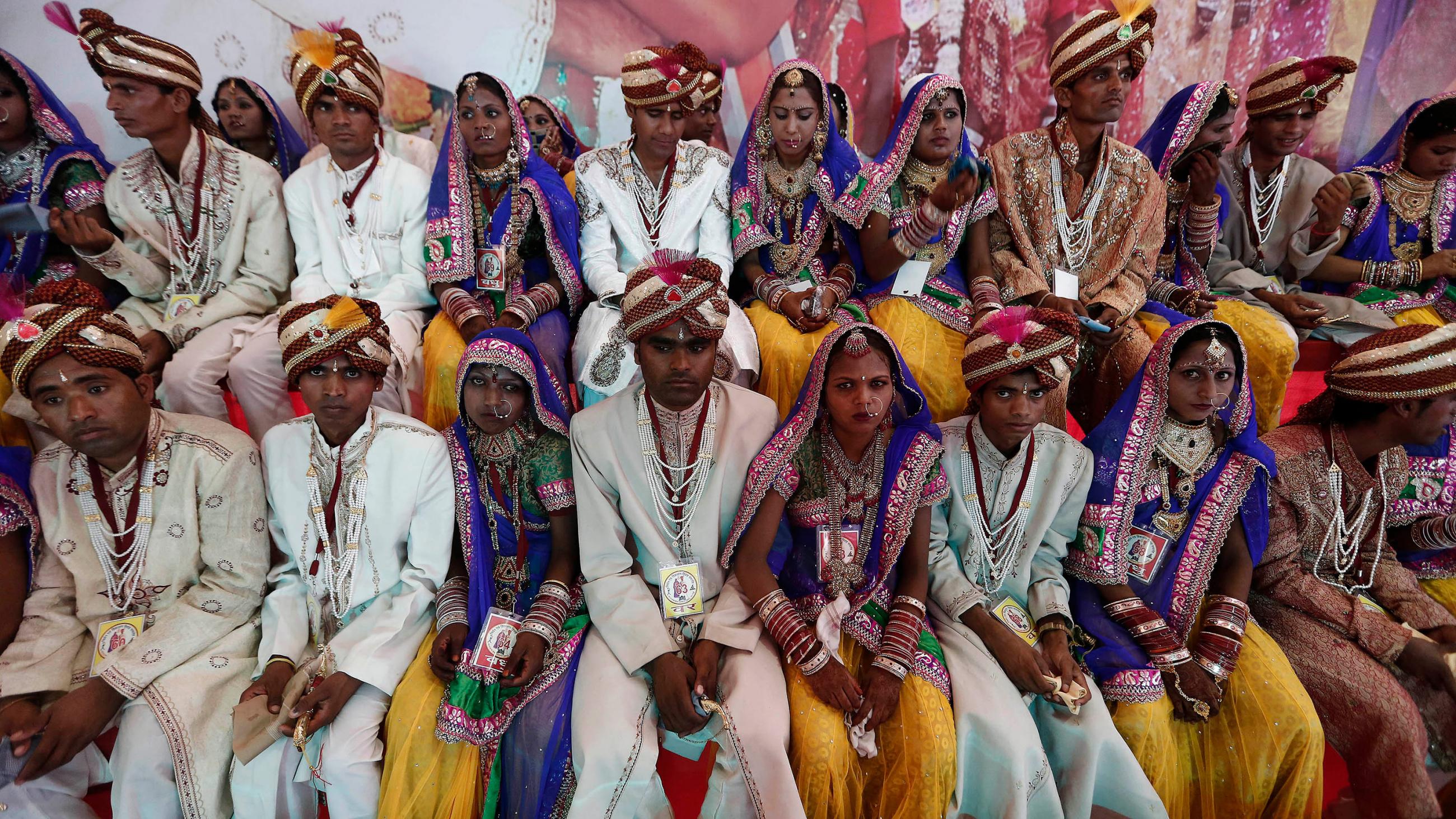
Also, an enormous amount of funding coming in as foreign direct investment comes in unquestioned, while the relatively small sums (a minuscule 6.6 percent of the foreign direct investment, as cited above) that comes into the voluntary sector is set to receive this extra-scrutiny treatment. This does not pass the smell test of fairness.
A belief repeatedly cited that the Sustainable Development Goals will succeed only if India succeeds
When it comes to ensuring that the entitlements citizens should enjoy as their right, and which the law guarantees, actually reach the people, the work of NGOs on the ground in partnering with the state is invaluable. As the government think tank Niti Aayog's initiative of NGODarpan says, "VOs/NGOs play a major role in the development of the nation by supplementing the efforts of the government." The achievement of the Sustainable Development Goals to which India has signed up also depends upon critical support from the voluntary sector. And as I heard loud and clear with my own ears at the UN headquarters in September 2015 during the launch of these targets, there was a belief repeatedly cited that the goals will succeed only if India succeeds.
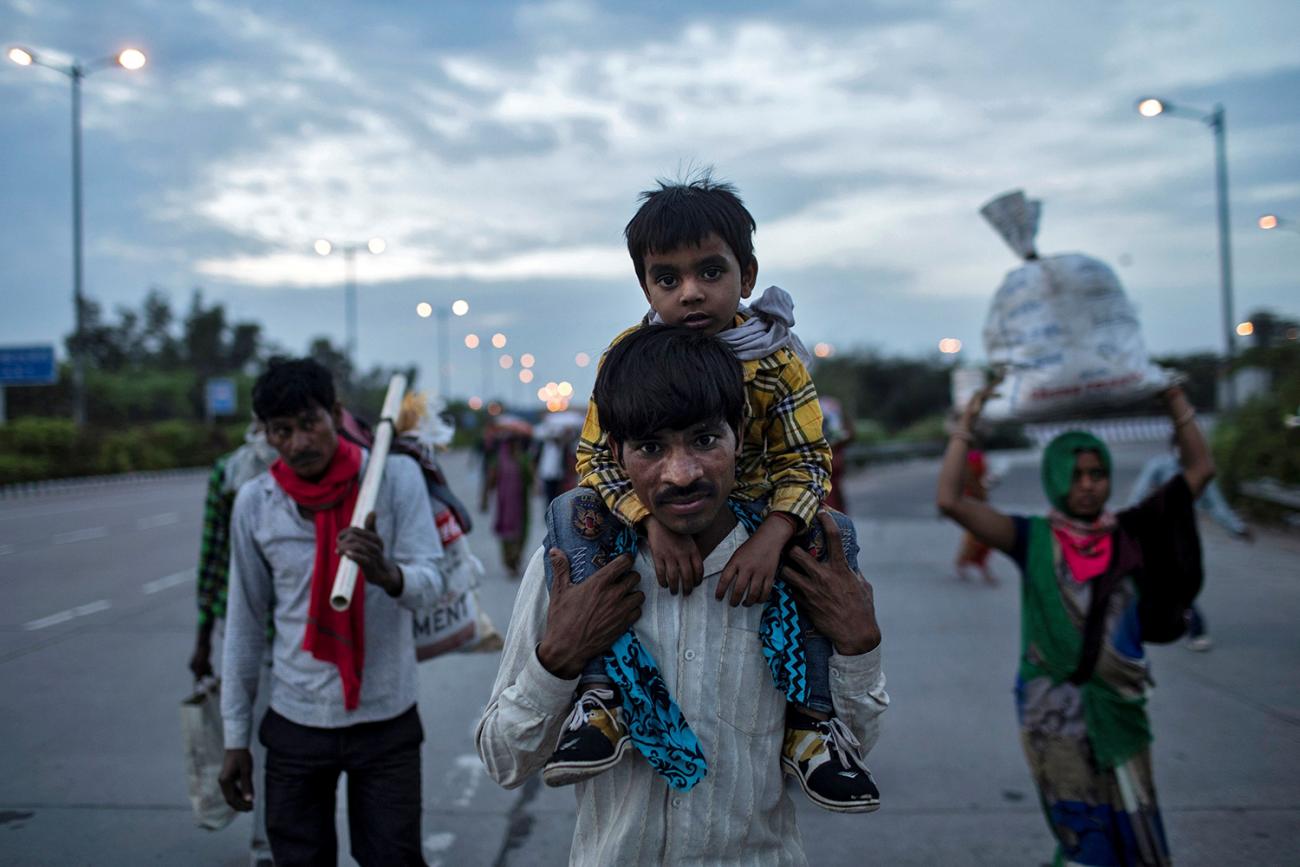
It is also during the myriad crises that afflict India periodically, both natural and anthropogenic that NGOs come into play. The central government told India's topmost court in April 2020 that about 8.4 million people were provided meals across the country during the crisis induced by a lockdown in the pandemic.
NGOs have come into play during the crisis induced by a lockdown in the pandemic
When thousands of distressed urban migrants were on the move, 5.42 million people were fed by state governments while the remaining 3.01 million were fed by NGOs. Pratham Mumbai Education Initiative launched the Mumbai Food Project to set up temporary food camps and distribution zones across Mumbai. The NGO has distributed over one million meals to workers in Mumbai since March 30. The organization Help Age India's mobile health-care units and teams reached out to the elderly, the homeless, and daily wage laborers to spread awareness during the lockdown. A voluntary network based in Gujarat, called CoAST (Collaboration for COVID Action and Support Group) set up a live map showing moving migrant clusters to match them up with local voluntary groups on the way they could seek help from—including food, water, tea, cookies, and even chappals (footwear) and connect them with local district officials on the way. My own organization, the Population Foundation of India's work in the field of social and behavior communication change through multiple initiatives of working alongside other NGOs as well as its own communication efforts is targeted to ensure that enduring change takes place in India.
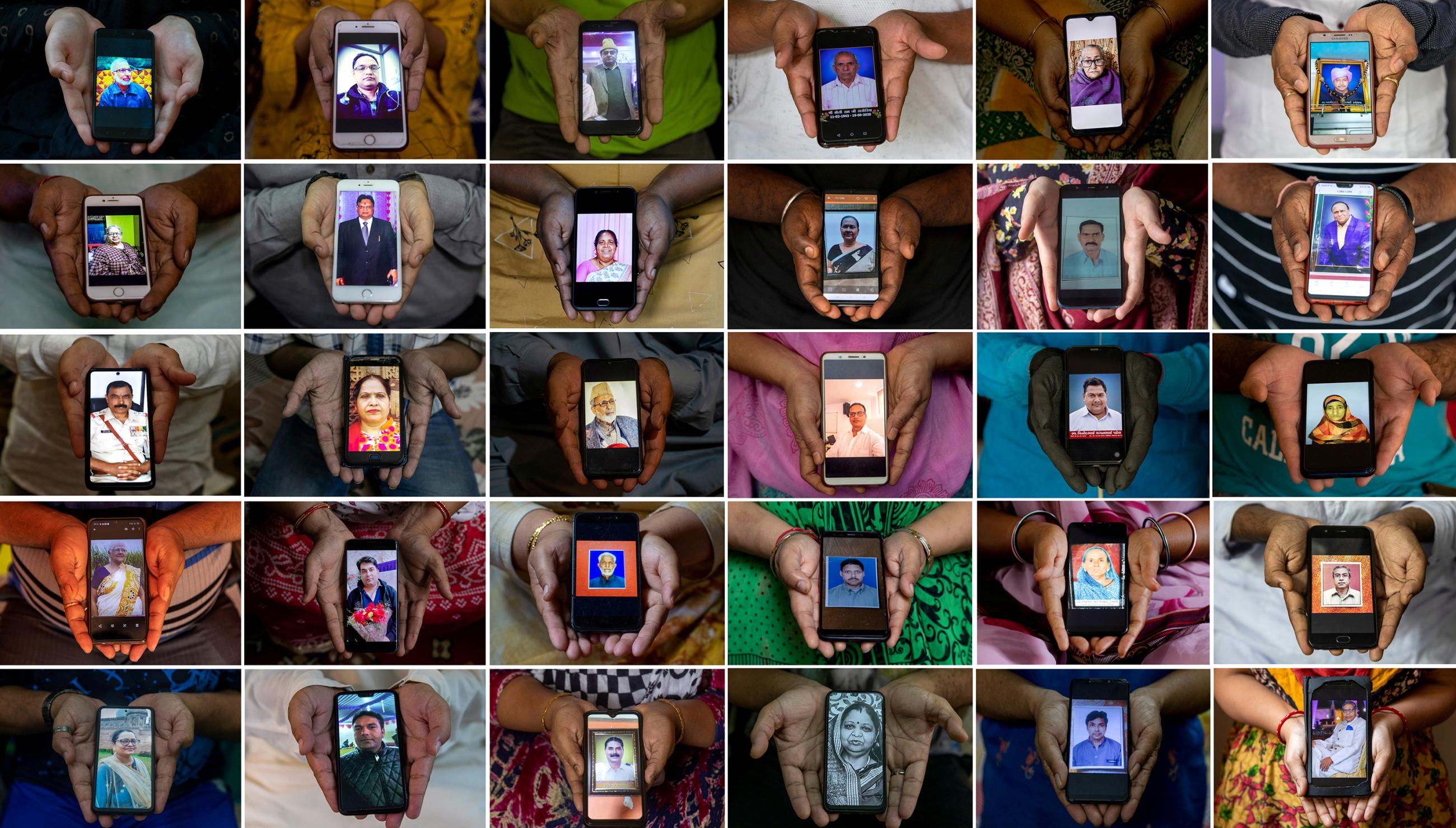
By their very definition, NGOs bridge the failure of government to be able to reach the last mile. The corruption at the grassroots, which ails the government sector and which Prime Minister Narendra Modi has encouragingly spoken of eradicating, is possible only with voluntary organizations on the ground acting as watchdogs.
The nation is facing "an unprecedented crisis and needs the services and resources of your organization like never before."
Indian Prime Minister Narendra Modi in March
We were heartened when the prime minister met representatives of the social sector virtually in March and said the nation was facing "an unprecedented crisis and needs the services and resources of your organization like never before." In April, Amitabh Kant, the chief executive officer of Niti Aayog, the government's think tank, wrote to more than 92,000 of NGOs like ours seeking help in identifying COVID-19 hotspots and distributing relief. He also asked for help to spread awareness about the pandemic and said they could set up community kitchens to provide food for migrant workers and the urban poor, and provide them with shelter. This resonated with the mandate that NGOs have set for themselves, of working and sharing responsibilities with the government. In the recent floods in south India, NGOs stood with government and the disaster relief force to provide succor and support.

Indian NGOs have worked in broad coalitions for decades now. Advocating Reproductive Choices and Vadaa Na Todo Abhiyan (honor your promises) are only two examples of networks that pool together hundreds of groups that enables voluntary work to acquire a force and push much more effective than when they act alone.
Advocacy
In India, the spirit of voluntarism, rooted in the tradition of daan, seva, charity and service in all its major religions has been central to the Indian ethos for centuries. But this took on fresh meaning after independence as NGOs forged new ground and helped national priorities to be met and got India going, enabling several government programs to be implemented more effectively.
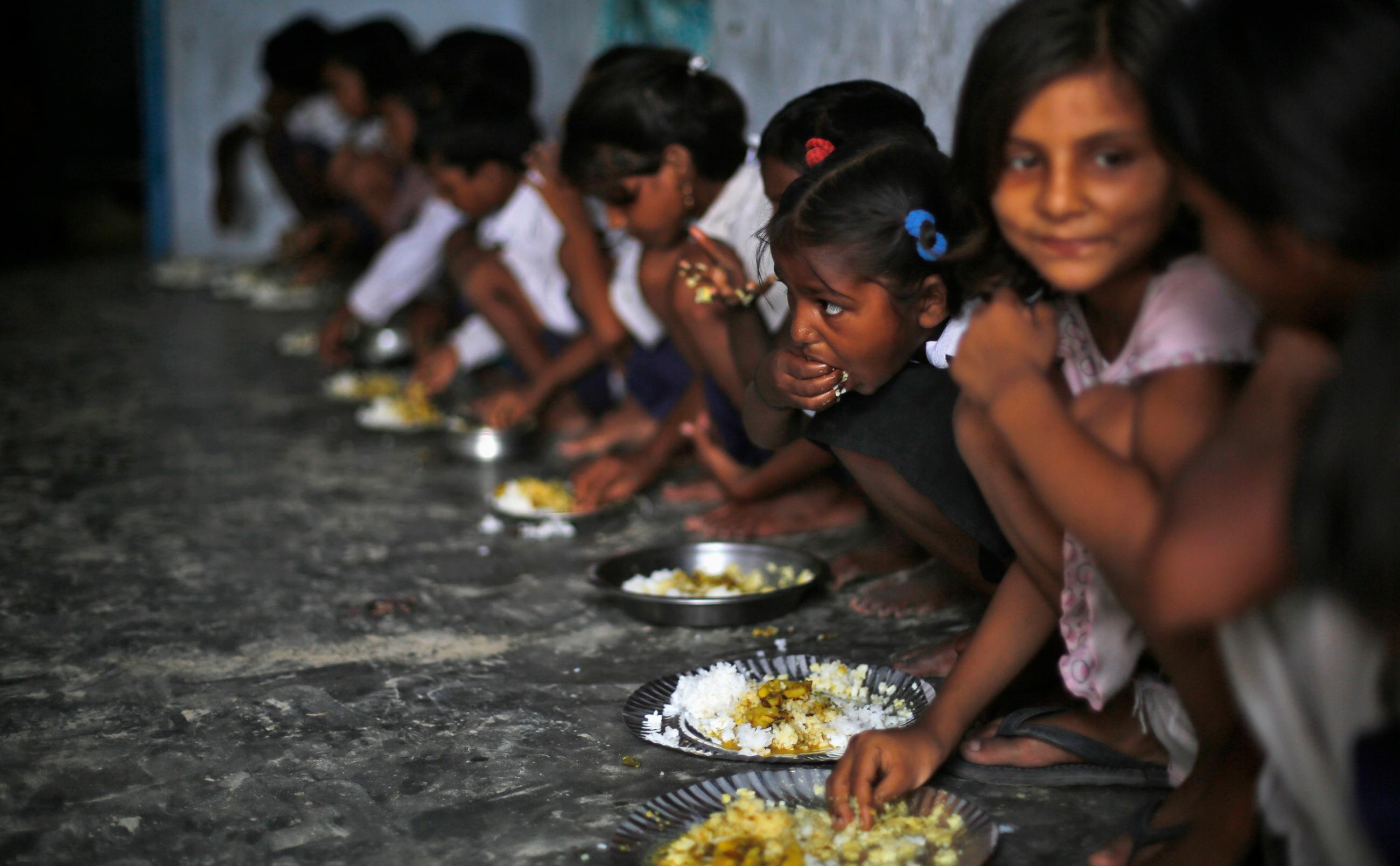
Akshay Patra provides meals for thousands of school children. Akshay Patra reaches out to approximately two million children across twelve states and two union territories of India, providing them with freshly-cooked hot meals on all school days.
Akshay Patra provides two million children across twelve states with freshly-cooked hot meals on all school days
Community Action for Health, whose advisory secretariat is housed at the Population Foundation of India, is one of the pillars of the National Health Mission, which places people at the center of the process of ensuring that the health needs and rights of the community are being fulfilled. Community Action for Health processes are currently being implemented by twenty-four state governments and union territories, in approximately 225,000 villages, across 362 districts. NGOs in various states have facilitated and enabled communities to participate and provide regular feedback thus contributing to strengthening health services and proverbially, bringing "public" back into public health. The right to information, now a national law that has opened the doors to transparent functioning was possible only as the NGO, Mazdoor Kisan Shakti Sangathan and the Soochna Adhikar Andolan led the Hamara Paisa Hamara Hisaab (our money, our accounts) movement, changing the entire landscape.
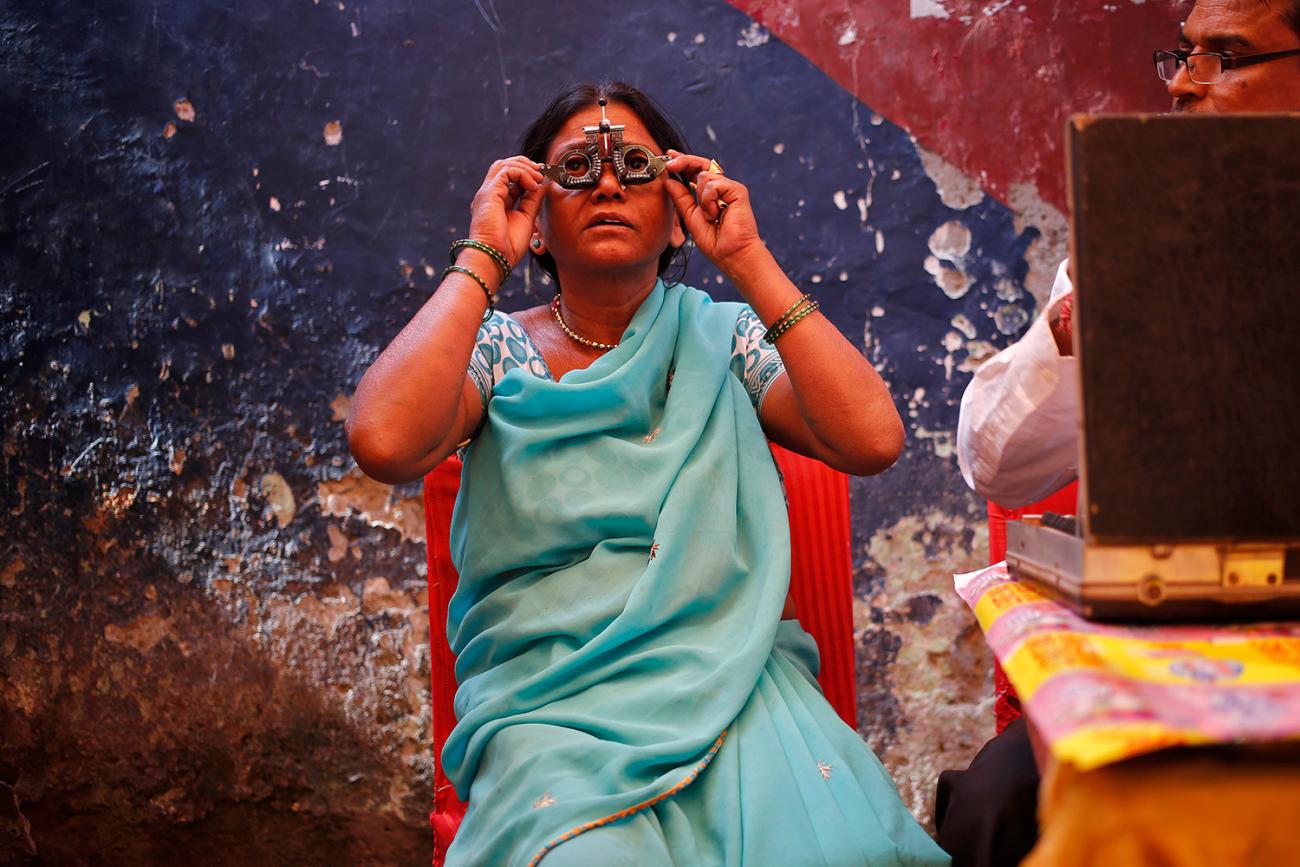
The Global Picture
We envisage a signature role for India in leading global partnerships. This must include taking pride in the work of brilliant minds, who are working actively on science, public health, mental health and other areas as representatives of civil society and are lively and dynamic trail blazers. They must be recognized for who they are, the ambassadors of India in the world.
The unfortunate depiction of international resources as "dubious"
We fully support the prime minister when he speaks of India getting its due at the United Nations' high table. The quest for India finding its place in the comity of nations is precisely what powers civil society to partner with government and with fellow organizations to achieve sustainable development goals and other global commitments. This sense of international partnership and fraternity, so important in today's world, will be hit hard with these new rules looking at all foreign contributions (coming in legally and openly) with suspicion.
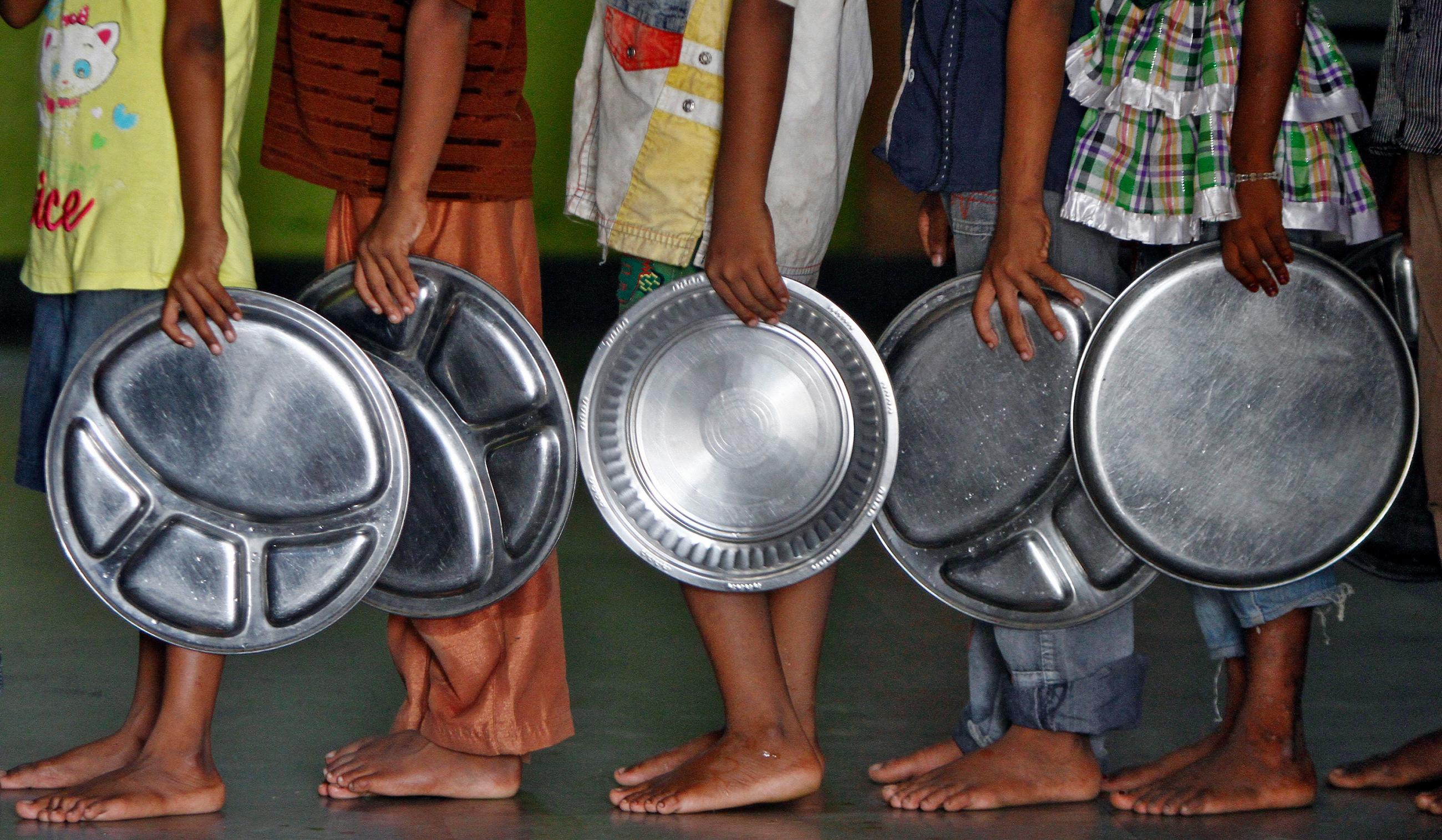
Global donors, working with so many NGOs in India, have enabled not just more resources on the plate, but also brought in their vision which ties in with our nation's ambitions apart from fulfilling critical needs. To now have rules that shackle this flow, despite the fact that it's coming in through legitimate means, is almost callously unmindful of the role that international philanthropists and respectable organizations have played so far and continue to play. India's prestigious science and management institutes, which have won high acclaim overseas, like the Indian Institute of Technology and the Indian Institute of Management—as well as crucial core industries—have also enjoyed the support from global organizations in the past, no doubt enriching the Indian experience. All that gets negated by the unfortunate depiction of international resources as "dubious."
To tar NGOs with one brush, because they partake of "foreign funds" damages India's standing as a mature democracy
In several multilateral organizations and forums/fora, Indian NGOs and their representatives occupy places of responsibility. They proudly represent India, and they amplify India's voice in shared global concerns. We should be proud of the positions that representatives of Indian NGOs have in so many non-profits abroad, exactly as we are of the heads of Google or Microsoft. To tar NGOs with one brush, because they partake of "foreign funds" damages India's standing as a mature democracy. To term as "foreign" what is actually "global," thwarts any sense of partnership or fellowship which India must be part of internationally. All in all, if India is not able to embrace all pillars that make this a strong and stable house, it can only undermine India's standing.

The Way Forward
The voluntary sector stands with government in its bid to clean up, and we want bad eggs to be tossed out. Obviously we, like anybody else, extend support for all legitimate legal action against those NGOs that are breaking the law.
We must restore trust between the two vital sectors of India—government and the non-government sector
But blanket strangulation of an entire sector does not achieve the purpose. It does quite the opposite. There already is a water-tight regulatory network and transparent use of funds. In 2019, the Center for Social Impact and Philanthropy at Ashoka University conducted a study into the Foreign Contribution Regulation Act registration database as part of a report titled "Estimating Philanthropic Capital in India." This report showed that the Indian government cancelled 10,069 registrations in 2015 and another 4,943 in 2017—essentially throwing out the baby with the bathwater. After that mass de-registration, we must restore trust between the two vital sectors of India—government and the non-government sector.
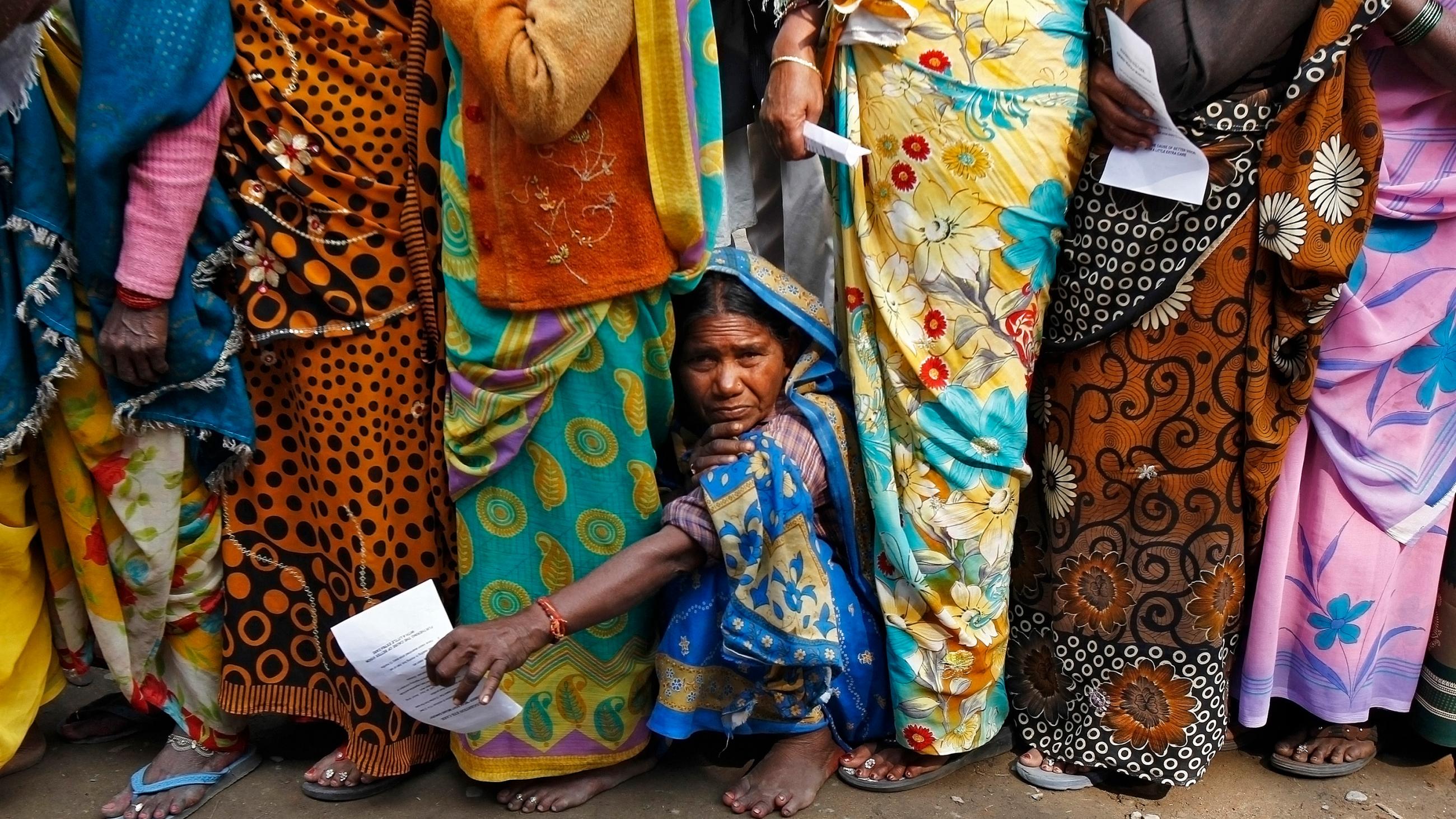
NGOs are also guided internally by stringent and transparent processes. A leading NGO, Action Aid, has as many as twenty-seven committees to review processes.
Enabling each citizen of our country to live a healthy, better, and more fulfilling life is the end game
Of course, the NGO sector must also introspect. Voluntarism, political autonomy and commitment to social justice constituted the backbone of India's NGO sector in early years when India first became a free country. Today, this sense of public service is missing in many professionals. This does not bode well for a nation that has to clear a huge backlog of human poverty and also address many new challenges. Civil society organizations should do their bit as they shape up for a challenging future.
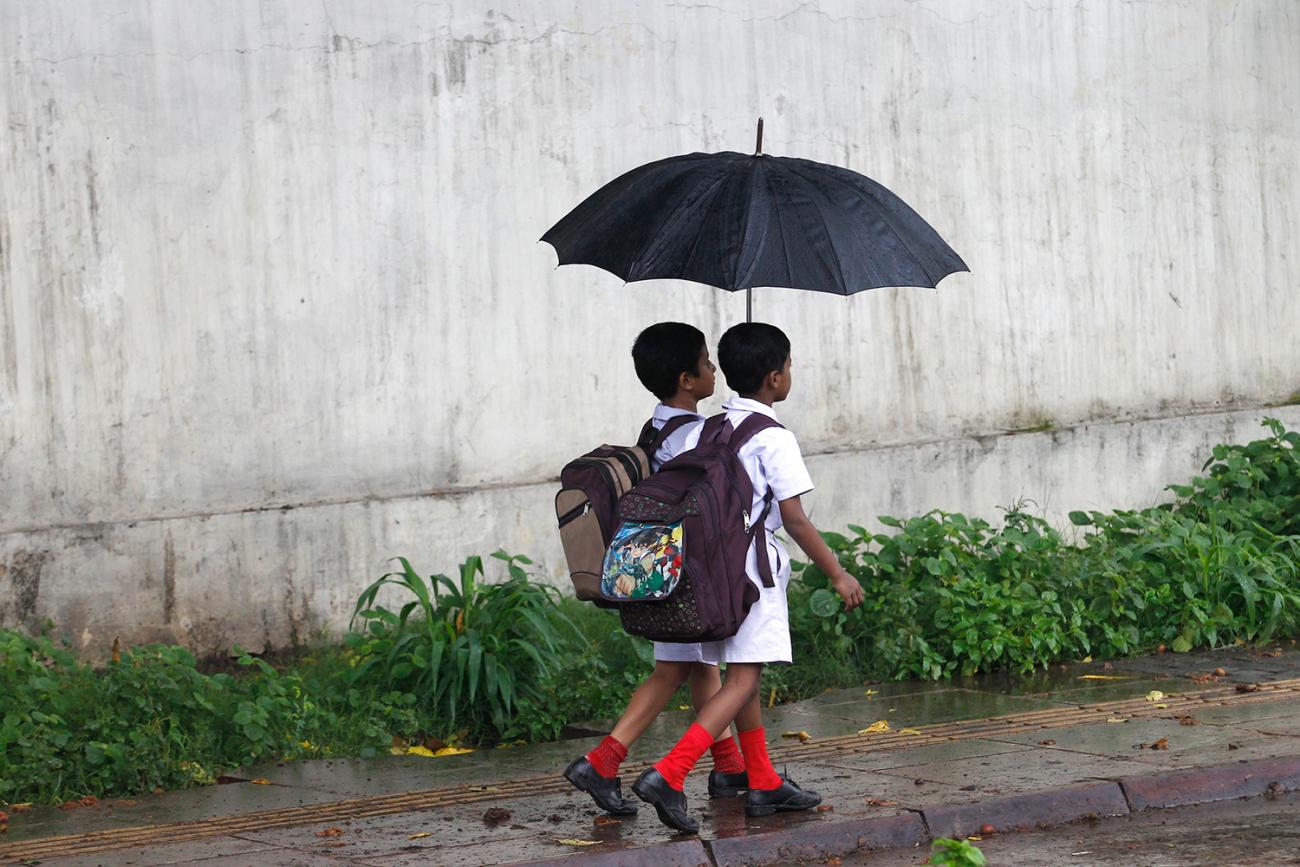
There is both a need and scope for collaboration between the state and NGOs. The voluntary sector is an essential theme in the vibrant India story. But a regulatory framework can be effective only if it allows NGOs to function independently and efficiently. Corrupt and dubious NGOs must face the law. But the entire sector cannot pay for the sins of a few. A vital part of the solution lies in consultations between government and the voluntary sector to arrive at a happy medium which enables both, the sector to thrive and for the government to meet goals. After all, enabling each citizen of our country to live a healthy, better, and more fulfilling life is the end game.





